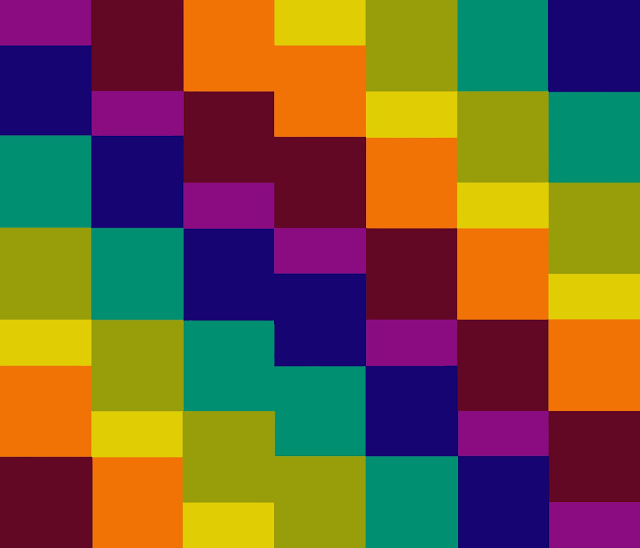The following article was included in the inaugural issue of The Turnaround, published by Amy K. Bormet and Washington Women In Jazz, Spring 2023
Tonal Relativity Studies: Investigating Intersensory Instruments, Chromatic Catalysts
One obvious yet fascinating feature of the human sensory system is that impressions morph constantly according to context; what may be perceived as a singular element only exists in concert with adjacent elements. Pitches shift, hues blend, tones are colored. That sounds can be described in terms of vision or feel is a hint that the senses themselves are not so well-defined. The very word “chromatic,” with roots in the Greek khrōma, can be used to indicate both visual and auditory phenomena.
In the introduction to The Interaction of Color, 20th century visual artist/color theorist Josef Albers noted, "Color deceives continually...in visual perception there is a discrepancy between physical fact and psychic effect. What counts here—first and last—is not so-called knowledge of so-called facts, but vision—seeing. Albers demonstrated how colors are mixed in the mind. A square of ochre-colored paper appears remarkably different when placed on an orange background as opposed to a sky blue one. Appreciation of such fundamental relationships can serve as an entry into the exploration of more intricate and complex interactions. This is the domain of artists of all kinds: sensations, atmospheres, moods, and ideas can be fluidly expressed by those versed in the arts of relationship and contrast. The options are limited only by the scope of one’s imagination.
For those interested in developing new pallets of possibility—sonic, visual, or otherwise—the Tonal Relativity Studies offer a way of contemplating sonic relationships in a 12-tone musical system through shape, pattern, and color.
One common shorthand to describe sets of intervallic patterns in music employs letters, with W to indicate a whole step and H to indicate a half step. Ionian, or the Major Scale, would therefore be written WWHWWWH. Using shapes instead—large circles for whole steps and small circles for half steps—the set of seven Modes of the Major scale, read left to right, top to bottom, could look like this:
 |
|
Figure 1: Modes of the Major Scale (large dots
= whole steps, small dots = ½ steps). |
Or, using squares to denote whole steps and rectangles for half steps, arranged in vertical columns to indicate ascending/descending pitches, and adding a spectrum of 12 equally-spaced colors to indicate twelve equally-spaced tones, the Modes of the Major Scale could be visualized this way:
 |
|
Figure 2: Modes of the Major Scale (squares =
whole steps and rectangles = ½ steps). |
This is the same information presented in the round, with the wide stripe = whole step, narrow stripe = half step. Two octaves are represented here, read clockwise with Ionian in the 12 o’clock position:
 |
|
Figure 3: Modes of the Major Scale (wide
stripe = whole step and narrow stripe = ½ step). |
While these examples are visualizations of scales containing 12 tones/colors, the same basic principles could be applied to chords, intervals, or scales in any tuning system, or containing any number of pitches (additional examples can be seen here).
In a 1966 interview John Coltrane said, “I think music is an instrument. It can create the initial thought patterns that can change the thinking of the people.” Could all forms of art that allow us, even for a moment, to let go of perceived boundaries between the senses, between disciplines, and between one another, have the potential to help us think in new ways?
